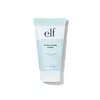What's inside
What's inside
 Key Ingredients
Key Ingredients

 Benefits
Benefits

 Concerns
Concerns

 Ingredients Side-by-side
Ingredients Side-by-side

Water
Skin ConditioningEthylhexyl Palmitate
EmollientGlycerin
HumectantAluminum Starch Octenylsuccinate
AbsorbentMagnesium Aluminometasilicate
AbsorbentButylene Glycol
HumectantGlyceryl Stearate
EmollientPEG-100 Stearate
Polysorbate 60
EmulsifyingCetearyl Alcohol
EmollientStearic Acid
CleansingJuglans Regia Shell Powder
AbrasiveSorbitan Stearate
EmulsifyingCocamidopropyl Betaine
CleansingTocopheryl Acetate
AntioxidantXanthan Gum
EmulsifyingDisodium EDTA
Sodium Chloride
MaskingTriethanolamine
BufferingPrunus Armeniaca Fruit Extract
Skin ConditioningPhenoxyethanol
PreservativeCaprylyl Glycol
EmollientParfum
MaskingWater, Ethylhexyl Palmitate, Glycerin, Aluminum Starch Octenylsuccinate, Magnesium Aluminometasilicate, Butylene Glycol, Glyceryl Stearate, PEG-100 Stearate, Polysorbate 60, Cetearyl Alcohol, Stearic Acid, Juglans Regia Shell Powder, Sorbitan Stearate, Cocamidopropyl Betaine, Tocopheryl Acetate, Xanthan Gum, Disodium EDTA, Sodium Chloride, Triethanolamine, Prunus Armeniaca Fruit Extract, Phenoxyethanol, Caprylyl Glycol, Parfum
Water
Skin ConditioningTridecyl Stearate
EmollientTridecyl Trimellitate
EmollientDipentaerythrityl Hexacaprylate/Hexacaprate
EmulsifyingButylene Glycol
HumectantGlyceryl Stearate
EmollientCocos Nucifera Oil
MaskingCaprylic/Capric Triglyceride
MaskingSilica
AbrasiveCetearyl Alcohol
EmollientCeteareth-20
CleansingSorbitol
HumectantHexyldecyl Stearate
EmollientBisabolol
MaskingDisodium Cocoamphodipropionate
CleansingTriethanolamine
BufferingOleth-10 Phosphate
Caprylyl Glycol
Emollient1,2-Hexanediol
Skin ConditioningStearyl Alcohol
EmollientCarbomer
Emulsion StabilisingDisodium EDTA
Phenoxyethanol
PreservativePotassium Sorbate
PreservativeChlorphenesin
AntimicrobialWater, Tridecyl Stearate, Tridecyl Trimellitate, Dipentaerythrityl Hexacaprylate/Hexacaprate, Butylene Glycol, Glyceryl Stearate, Cocos Nucifera Oil, Caprylic/Capric Triglyceride, Silica, Cetearyl Alcohol, Ceteareth-20, Sorbitol, Hexyldecyl Stearate, Bisabolol, Disodium Cocoamphodipropionate, Triethanolamine, Oleth-10 Phosphate, Caprylyl Glycol, 1,2-Hexanediol, Stearyl Alcohol, Carbomer, Disodium EDTA, Phenoxyethanol, Potassium Sorbate, Chlorphenesin
 Reviews
Reviews

Ingredients Explained
These ingredients are found in both products.
Ingredients higher up in an ingredient list are typically present in a larger amount.
Butylene Glycol (or BG) is used within cosmetic products for a few different reasons:
Overall, Butylene Glycol is a safe and well-rounded ingredient that works well with other ingredients.
Though this ingredient works well with most skin types, some people with sensitive skin may experience a reaction such as allergic rashes, closed comedones, or itchiness.
Learn more about Butylene GlycolCaprylyl Glycol is a humectant and emollient, meaning it attracts and preserves moisture.
It is a common ingredient in many products, especially those designed to hydrate skin. The primary benefits are retaining moisture, skin softening, and promoting a healthy skin barrier.
Though Caprylyl Glycol is an alcohol derived from fatty acids, it is not the kind that can dry out skin.
This ingredient is also used as a preservative to extend the life of products. It has slight antimicrobial properties.
Learn more about Caprylyl GlycolCetearyl alcohol is a mixture of two fatty alcohols: cetyl alcohol and stearyl alcohol. It is mainly used as an emulsifier. Emulsifiers help prevent the separation of oils and products. Due to its composition, it can also be used to thicken a product or help create foam.
Cetearyl alcohol is an emollient. Emollients help soothe and hydrate the skin by trapping moisture.
Studies show Cetearyl alcohol is non-toxic and non-irritating. The FDA allows products labeled "alcohol-free" to have fatty alcohols.
This ingredient is usually derived from plant oils such as palm, vegetable, or coconut oils. There is debate on whether this ingredient will cause acne.
Due to the fatty acid base, this ingredient may not be Malassezia folliculitis safe.
Learn more about Cetearyl AlcoholDisodium EDTA plays a role in making products more stable by aiding other preservatives.
It is a chelating agent, meaning it neutralizes metal ions that may be found in a product.
Disodium EDTA is a salt of edetic acid and is found to be safe in cosmetic ingredients.
Learn more about Disodium EDTAGlyceryl Stearate is a mix of glycerin and stearic acid.
It is used to stabilize the mixing of water and oil ingredients. By preventing these ingredients from separating, it can help elongate shelf life. It can also help thicken the product's texture.
As an emollient, it helps soften skin and supports barrier-replenishing ingredients.
In cosmetics, Glyceryl Stearate is often made from vegetable oils or synthetically produced.
This ingredient may not be fungal-acne safe
Fun fact: The human body also creates Glyceryl Stearate naturally.
Learn more about Glyceryl StearatePhenoxyethanol is a preservative that has germicide, antimicrobial, and aromatic properties. Studies show that phenoxyethanol can prevent microbial growth. By itself, it has a scent that is similar to that of a rose.
It's often used in formulations along with Caprylyl Glycol to preserve the shelf life of products.
Triethanolamine is an emulsifier and pH adjuster. It is created using ethylene oxide and ammonia. This gives Triethanolamine a nitrogen core and a similar scent to ammonia.
As an emulsifier, it prevents ingredients from separating and enhances texture by adding volume to a product.
PH adjusters are common in cosmetic products. The pH of a product can affect the effectiveness of other ingredients. A product with a high pH may also irritate the skin.
Learn more about TriethanolamineWater. It's the most common cosmetic ingredient of all. You'll usually see it at the top of ingredient lists, meaning that it makes up the largest part of the product.
So why is it so popular? Water most often acts as a solvent - this means that it helps dissolve other ingredients into the formulation.
You'll also recognize water as that liquid we all need to stay alive. If you see this, drink a glass of water. Stay hydrated!
Learn more about Water